Welcome to the kick-off for my Everest 2019 coverage! I have already posted a few articles on 2019 and am actively covering the current K2 winter attempts so let me officially welcome you.
This will be my 18th season of all-things Everest: 12 times providing coverage, another 4 seasons of actually climbing on Everest and two years attempting Lhotse.
I did similar coverage for the 2004, 2005, 2006, 2007, 2009, 2010, 2012, 2013, 2014, 2015, 2016, 2017 and 2018 seasons. I summited Everest on May 21, 2011, and have attempted Everest three other times – 2002, 2003, 2008 and Lhotse in 2015 and 2016.
If you are one of my 3 million regular readers, hello again, if you are new, welcome!
My goal is to provide insight and analysis of what is going on up there with no favorites or agendas. I use sources directly from the mountain, public information plus my own experiences to write my posts.
Usually, I post once a day as the season gets started in early April and ramp up to almost hourly coverage during the intense summit pushes in mid to late May. I spend several hours a day to create these updates. You can sign up for (and cancel) notifications on the lower right sidebar or check the site frequently.
Why do I do this? Well, one word: Alzheimer’s. I lost my mom, Ida, and four aunts to this disease and it changed my life forever. You can read more at this link. I hope that you enjoy my coverage and make a donation to any of my selected non-profit partners as a tangible thank you. I never benefit financially from your donations. Just click on this button that is always on the top right sidebar.
2019 Outlook
Climbing Mount Everest continues to be a bright light to a swarm of hungry bugs. Last year was a record year with 802 total summits from all routes and I look for that record to be broken in 2019. There are always characters and unpredicted events to keep us engaged. This year, there will be a new route attempt from the North side. As usual, we can expect to see deaths. I believe 6 to 8 people will die on Everest this spring, mostly on the Nepal side from inexperienced climbers climbing with unqualified guides. This has been the pattern the past few years.
In keeping with the past few years, look for more climbers than ever from China and India. As I’ve detailed in the past, China requires all Chinese Nationals to have a summit of an 8000-meter peak before climbing Everest from China so many simply go to Nepal where there are no requirements. As for the Indian climbers, it has become folklore that if you summit Everest you can leverage that into fame and fortune – a huge miscalculation by so many – but many Nepal/India guide companies have come forth to meet this market demand plus creating a profitable business running training programs for the under-20 crowd then taking them to Everest. A deadly gamble that may backfire one day.
As we enter the 2019 season, the Chinese Government has issued a slew of new rules and capped the number of foreign permits to 300. In some ways this is a marketing ploy given that the most foreigners ever to summit from their side was in 2007 at 197. They are also increasing fees to cover trash collection and funding enforcement rangers. They are also saying they will collect trash and remove the dead bodies from their side. Also, only climber and trekkers with climbing teams will be allowed to go all the way to base camp. All of this is setting up the opening of their Mountaineering Museum near base Camp that will attract tens of thousands of tourists with skiing, paragliding, helicopter tours and more. China is monetizing Everest just like other countries have for decades.
Uncharacteristically, Nepal has been quiet this year with no new rules announced – a pleasant change from their recent history of ginning up the climbing community with promises of a cleaner, safer environment with rules that are never implemented. However, the scandal around rescue fraud continues with all sides pointing fingers and making threats. Bottom line for climbers this year is to triple-check with your evacuation company that you are covered for the guide service you use. On an ominous note for the upcoming season, an accident occurred on February 27, 2019, when an Air Dynasty helicopter carrying Tourism Minister Rabindra Adhikari and six other people crashed killing all onboard while flying in a snowstorm.
Best of luck to all on any route this year. I hope the weather is as good as it was in 2018.
Everest: Years of Turmoil, Records and Summit Celebrations
Those who follow Everest closely never know what to expect each season. Some years, there is bad weather, then there are natural disasters like earthquakes and avalanches, other years the drama is manmade with men behaving like boys. Of course there are years that everything seems to go right resulting in record summits. Let’s take a quick trip down memory lane and review the past few years:
2010: A Safe and Successful Year
By historic standards, Everest 2010 was a safe and successful year. There were about 537 summits (347 from the south) with 3 reported deaths, all on the north, and several injuries and rescues. The total Everest summits broke the 5,000 level since the first summit in 1953.
The storyline for climbers and their families was the weather, however it was all Jordan Romero and Apa Sherpa for the rest of the world who became the youngest to summit and broke the record for most summits respectively.
For the first time in several years, the north operated in an almost normal manner. Teams dealt with a few border restrictions early but arrived at base camp and immediately began their acclimatization rotations. On the South, the ropes were in early and the weather seemed drastically different from the North, at least in April. Read my season recap here.
2011: Alan Finally Summits and a Normal Year
Please forgive my narrow scope for this year but after three previous attempts, I summited Everest on May 21, 2011 from the Nepal side Kami Sherpa of International Mountain Guides. This was part of The 7 Summits Climb for Alzheimer’s: Memories are Everything® campaign. It was very humbling standing on the summit after all my attempts but more gratifying was the reaction to my Alzheimer’s awareness and fundraising efforts. Thank you everyone who participated.
I approached this climb quite differently from previous attempts including preparation, training, guide service and more. The season was fairly normal with good weather and manageable crowds and no natural disasters.
The Himalayan database states there were 535 combined summits from both sides 58% summit to climbers at base camp. There were 4 deaths. Read more about my summit at this link.
2012: Himex Cancels Expedition, Narrow Window Increases Crowding
Perhaps the most dramatic year since 1996. A lack of snow combined with high winds created dangerous rockfall on the Lhotse Face causing many injuries primarily to Sherpas before the route was moved to a safer passage to Camp 3. However, these dangers plus the deaths of three Sherpas early in April from multiple causes caused the Sherpas from Himex to lose confidence. Russell Brice, arguably the most famous of the Everest commercial operators, canceled his entire Himalaya spring season (Everest, Lhotse, and Nuptse) taking over 100 people off the mountain. It was an unprecedented decision.
The other teams continued fighting difficult weather on both sides of Everest and with only four days of suitable weather for summit pushes endured the famous crowds at the normal bottlenecks of the 2nd Step, and the Hillary Step. Totally unrelated to the crowds, weather or rockfall, 6 more climbers died primarily from poor decision making or altitude related illnesses generating sensational headlines around the world and calls for regulation on Everest. The Himalayan database states there were 551 combined summits from both sides and 10 deaths. Read my season recap here.
2013: A Normal Year and a Petty Fight on the Lhotse Face
Everest 2013 was a good year for most climbers but a difficult one for the professionals. Overall it could be termed a normal year with little drama with one large exception. There were an estimated 658 summits in the spring of 2013, 539 on the south and 119 on the north. 8 confirmed deaths. This was the most summits in the history of Everest including to 2016.
2013 brought the inexcusable behavior of both Sherpas and professional climbers arguing and fighting about who had the right to climb on the Lhotse Face while the fixed ropes were being set for the commercial teams. This incident, in my opinion, accelerated the creation of Sherpa owned guide services that are beginning to dominate Everest.
For many climbers, they accomplished a lifelong dream, returned safely home to a family who have started to breathe again. With an unparalleled lifetime experience, for some their lives were changed forever. Read my season recap here.
2014: 19 Deaths and Nepal Side Closed
The Everest 2014 season was full of tragedy with 19 deaths from an ice serac release off the West Shoulder of Everest onto the Khumbu Icefall. Shameful exploitation and thin coverage of the real story by the general media created unnecessary drama where the focus should have been on the victims and their families.
In my season summary, I look at what happened, the reasons for effectively closing Everest from Nepal, the roles played by all parties and some ideas on a credible path forward. The summary is not a sound bite, it is long, complicated and will take time to digest. Just like anything with Everest it will evoke emotions and reactions. My hope is for badly needed changes on Everest. A mountain I value and whose climbers I admire – past, present and future.
There were 121 summits from the North and 4 from the South. There were 19 deaths on the South. Read my season recap here.
2015: 18 Deaths, an Earthquake and NO Summits
Another tragic season but this time due to an earthquake, not climbing events. 19 people were killed at Everest Base camp from an avalanche off the Pumori -Lingtren Ridge then the Chinese closed the North fearing aftershocks. Nepal continued to promote climbing but no team wanted to risk going back through the Icefall. For the first time since 1974, there were no spring summits on Everest from any route, any camp by any means. I was at Camp 2 in the Western Cwm attempting Lhotse when the earthquake struck. Read my season recap here.
2016: Back to Normal but Inexperience Reigns
Everest 2016 was a success by many measures. Climbers achieved life long dreams and a country got a break. It was a ‘normal’ season with 640 summits but sadly there were five deaths plus one on Lhotse. However in stark contrast to the previous four years on Everest, 2016 lacked large scale tragedy or extreme drama.
The emerging trend of low cost expeditions continued and many (not all) of the deaths had the marking of inexperience, insufficient support and low prices this year. While I cannot verify all the statements made in this report of three Indian climbers who lost their lives in 2016, the article, An Avoidable Tragedy, is illustrative of the risks and well worth a read. Read my season recap here.
2017: The Weather Gods Must Be Angry
This is one of the more difficult seasons I have covered and impossible to sum up in one word so let me use several: wind, tragedy, misinformation, spin and summits. The wind played havoc on the south side while the normally windier north was almost tranquil with a few serious exceptions. A report of four dead at the South Col turned out to be thankfully incorrect and no one took responsibility for the misinformation. The newspaper that reported it shrugged their shoulders suggesting that poor reporting was normal and this was Nepal.
In 2017 there were 648 summits, 237 from Tibet and 411 from Nepal and 11 didn’t use supplemental oxygen. There were 6 deaths, 3 didn’t use Os and only 1 died on the descent. Read about Everest 2017
2018: A Record Year for Weather and Summits!
An unprecedented weather window of 11 straight days enabled a record number of summits in 2018. The first summits were on May 14 by the rope fixing team on the Nepal side followed the next day by 70-year-old Chinese double-amputee Xia Boya with his Sherpa guides. Every day thereafter had summits from both the sides. Overall it was about as good of a season as could be expected on the world’s highest peak. The temperatures were bit warmer than usual and the winds were calmer in spite of the occasional “difficult” summit day. With the long weather window, teams spread out thus reducing the usual crowding we’ve seen before. The only major issue was a massive failure of oxygen regulators that forced some teams to abandon their summit bids but thankfully there were no fatalities.
2018 was a record year for Everest with 802 total summits. The previous record year was 2013 with 670 total summits by all routes. There were a total of 5 deaths in spring 2018, 4 on the Nepal side and 1 on the Tibet side. Read more about Everest 2018
Cost to Climb Everest
As I covered in my annual “How much does it cost to climb Mount Everest – 2019 Edition” post, look for prices to be higher overall but still deals to be found attracting experienced climbers.
The headline for 2019 is a widening of the price spread between traditional foreign guides and Nepali based guides as the Nepali lock in the low-end market and the foreign guides move ever higher. Case in point, Himalayan Experience (Himex) was at $55,000 to $60,000 for years and is now at $70,000. Meanwhile Seven Summits Treks (SST) asked $32,000 in 2018 but has increased their list price to $38,000 in 2019. But the difference is that Himex will not negotiate and SST will. So the spread went from $28,000 to $32,000, in other words it continues to be cheaper to climb with a Nepali guide service. If you choose your Everest expedition strictly on price, the Nepali guides will win.
As for which side is the best deal, Tibet continues to win but that spread is closing fast and will not last for much longer. Finally, for those who just want to go on an Everest expedition with the least amount of “inconvenience” possible, Furtenbach, 7 Summits Club and even Seven Summits Treks can meet you every need for a Princely sum of $130,000 plus.
As for safety, people die on both sides and most of the deaths these days are due to inexperience and not who you selected as your guide.
Follow the Money
After a huge increase in 2018, the increase on the Tibet side was much lower than in Nepal but in a swap it is now less expensive to climb from Nepal than from Tibet except for the ultra high-end guides like Alpenglow that competes on a high level of service, not on price.
The median price for low-end climbs in Nepal is $42,500 and 43,875 in Tibet while the top end comes in at $67,000 in Nepal and a whopping $85,000 from Tibet.
Guided climbs on Everest is like any competitive marketplace, it’s driven by supply and demand and the demand is huge! As I’ve noted for years now, more and more Everest climbers are coming from India and China adding to the historical demand from the Americas, Europe, and Southeast Asia. Meeting that demand are many Nepal based guides.
Bottom line: Look for Everest to become more crowded in Nepal, more expensive and controlled in Tibet and for six to eight people to lose their lives each year – more on the south side due to more people climbing that side.
Summit Statistics
Another popular post is my Everest by the Numbers – 2019 edition
2018 was a record year for Everest summits. The previous record year was 2013 with 670 total summits by all routes. For 2018, the Himalayan Database shows 802 summits and only 1 who did not use supplemental oxygen and 68 females. The Nepal side saw a total of 562 summits made up up 266 foreigners (aka members) and 296 High Altitude Workers (aka Sherpas). For the members who got above base camp, 76% went on to summit. On the Tibet (aka Chinese) side there were 110 summits for workers and 130 by foreigners for a total of 240 summits. 66% of the members above base camp summited. There were a total of 5 deaths in spring 2018, 4 on the Nepal side and 1 on the Tibet side. 1 climbing was climbing without supplemental oxygen and was on the south side.
The Himalayan Database reports an all-time total of 9,159 summits (4,738 members and 4,421 hired) of Everest through December 2018 on all routes by 5,294 different people. 1,211 people, mostly Sherpa, have summited multiple times. Of the total, 536 were female climbers. The Nepal side is more popular with 5,888 summits compared to 3,271 summits from the Tibet side. 211 climbers have summited without supplemental oxygen, about 2.3%. 34 climbers have traversed from one side to the other. About 68% of all expeditions put at least one member on the summit.
295 people (175 westerners and 118 Sherpas) have died on Everest from 1924 to January 2019 or 3.5%. Of the deaths, 169 died attempting to summit without using supplemental oxygen. Of the 295 deaths, 75 died on the descent after their summit or 25%. The Nepalese side has seen 5,888 summits with 185 deaths through January 2019 or 3.6%, a rate of 1.25. 122 died not using Os. The Tibet side has seen 3,271 summits with 108 deaths through January 2019 or 3.7%, a rate of 1.13. 47 died not using Os. Most bodies all are still on the mountain but China has removed many bodies from sight. The top causes of death on both sides were from avalanche (77), fall (67), altitude sickness (32) and exposure (26).
From 1921 to 1999: 170 people died on Everest with 1,169 summits or 14.5%. But the deaths drastically declined from 2000 to 2019 with 7,990 summits and 123 deaths or 1.7%. However, two years skewed the deaths rates with 17 in 2014 and 14 in 2015. The reduction in deaths is primarily due to better gear, weather forecasting and more people climbing with commercial operations.
Of the 8000 meter peaks, Everest has the highest absolute number of deaths at 294 but ranks near the bottom with a death rate of 1.23. Annapurna is the most deadly 8000er with one death for about every three summits (71:261) or a 3.91 death rate. Cho Oyu is the safest with 3,681 summits and 50 deaths or a death rate of 0.55.
Himalayan Database
I use the Himalayan Database as my primary source of Everest summit statics. If you are climbing in 2019, they are asking you to fill in an electronic web-based survey. This replaces the time consuming process of visiting each team in their hotel before the climb. Please use this link to complete the survey. You can now download the HDB for free at their site.
Follow Along!
I have begun to create my annual team location table and tracking climber’s blogs (see sidebar). If you have a team not listed, please let me know and I will add them if I can track them. If you prefer not to be mentioned, please contact me.
I will post a few background articles and interviews between now and early April when the teams arrive at the base camps. If you would like to see anything special this year, post a comment or drop me an email.
Here’s to a safe season for everyone on the Big Hill.
Climb On!
Alan
Memories are Everything
 If you dream of climbing mountains but are not sure how to start or reach your next level from a Colorado 14er to Rainier, Everest or even K2, I can help. Summit Coach is a consulting service that helps aspiring climbers throughout the world achieve their goals through a personalized set of consulting services based on Alan Arnette’s 20 years of high altitude mountain experience and 30 years as a business executive.
If you dream of climbing mountains but are not sure how to start or reach your next level from a Colorado 14er to Rainier, Everest or even K2, I can help. Summit Coach is a consulting service that helps aspiring climbers throughout the world achieve their goals through a personalized set of consulting services based on Alan Arnette’s 20 years of high altitude mountain experience and 30 years as a business executive.
Everest Pictures and Video
© all images owned and copyrighted by Alan Arnette unless noted
A tour of Everest Base Camp 2016

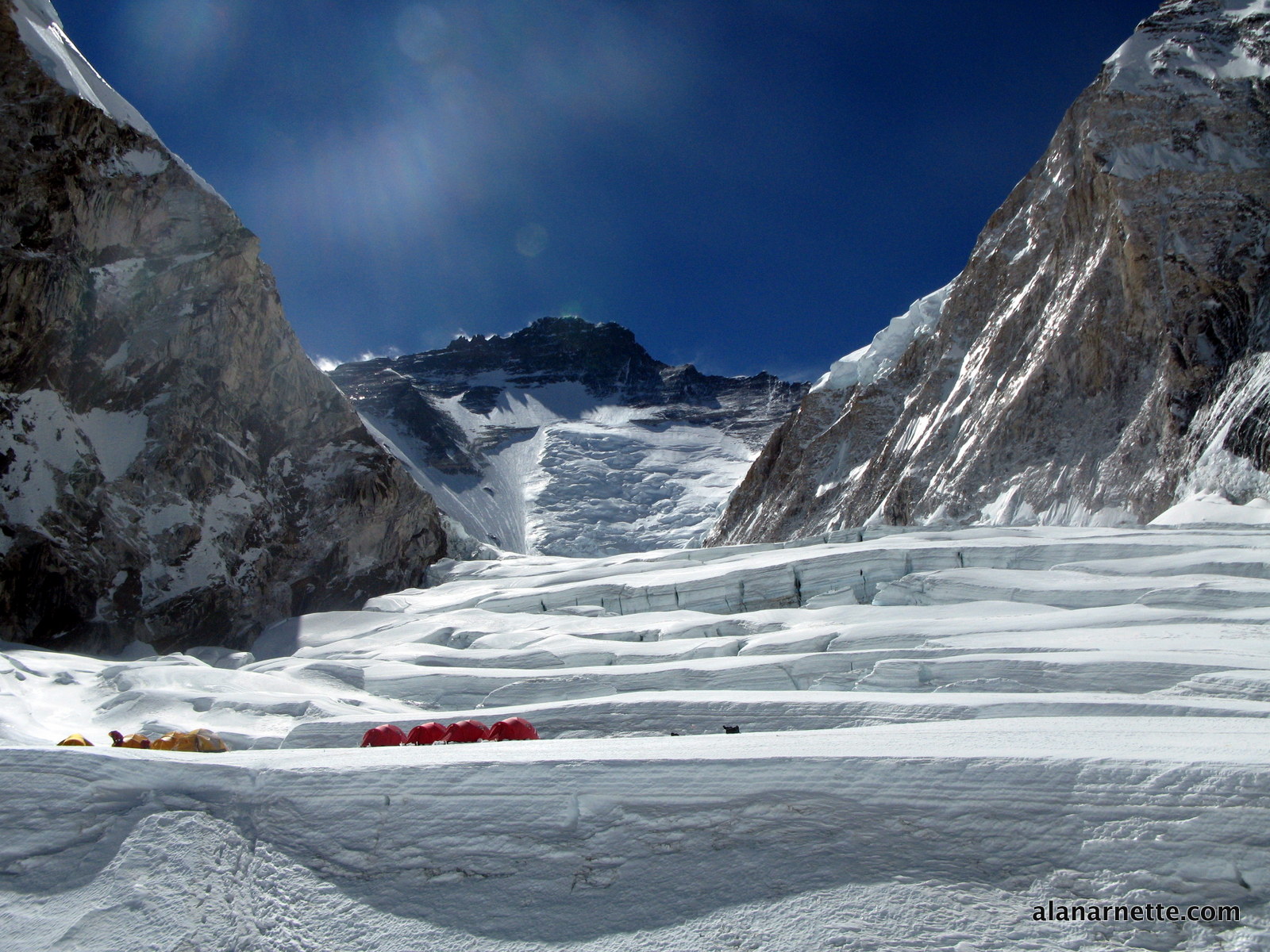
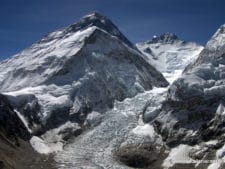
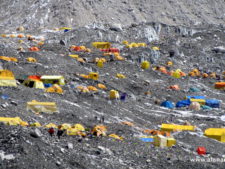
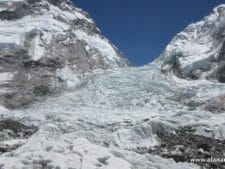
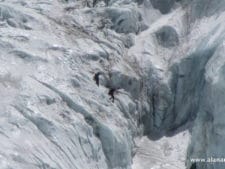
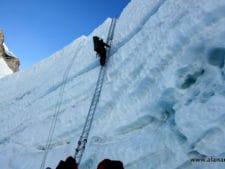
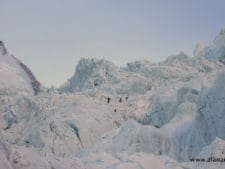
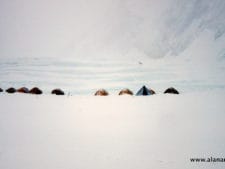
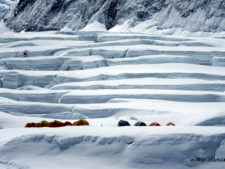
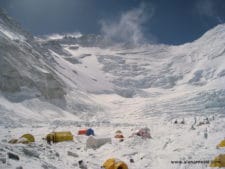
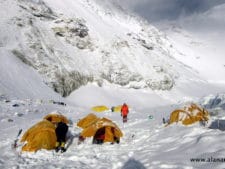
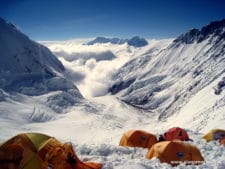
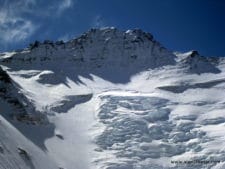
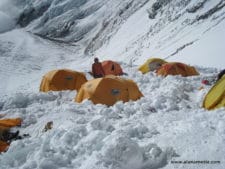
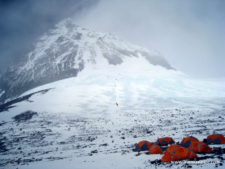
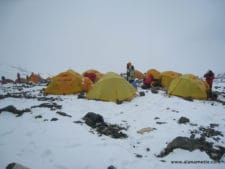
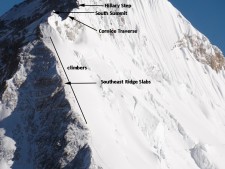
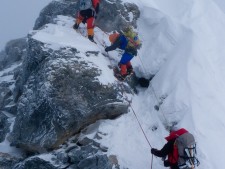
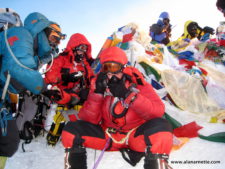


One thought on “Everest 2019: Welcome to Everest 2019 Coverage”
Again So looking forward to your updates in Everest this year Alan.
Comments are closed.